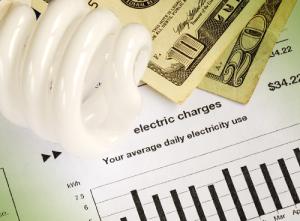Electric Rates 1/40th of the CPI

Electricity is 2.522 percent of the Consumer Price Index. As a fraction, that’s about one-fortieth.
Other components of the CPI with a similar weight on this all-important measure of inflation? Full service meals and snacks, like restaurants, have a weight in the CPI of 2.324. Limited service meals and snacks, like fast food, have a weight of 2.272.
Apparel has a weight in the CPI of 2.464. Used cars and trucks have a weight of 2.544. Hospitals and related services have a weight of 2.308. Motor vehicle insurance has a weight of 2.874.
The price trends in each of these categories of consumer goods and services – full service meals/snacks, limited service meals/snacks, apparel, used cars and trucks, hospitals and related services, and motor vehicle insurance – have roughly the same effect on the CPI as electric rate trends.
Demand Growth Mixed in 2023
Many predict increasing electricity demand growth. But 2023 demand in the U.S. Lower 48 was 4,077 terawatt-hours, down 1.56 percent from 2022. Per the U.S. Department of Energy's Hourly Electric Grid Monitor.
In the most recent quarter, demand was down 1.24 percent from Q4 2022.
Year-over-year, 2023 demand was down 3.13 percent in the Mid-Atlantic (nineteen percent of the Lower 48 total), for example. And it was down 2.15 percent in the Midwest (seventeen percent of the Lower 48 total). And down 4.75 percent in the Southeast (six percent of the Lower 48 total).
But 2023 demand was up 3.76 percent in Texas (eleven percent of the Lower 48 total).
Earnings Growing Again Finally
Key to affordability for electricity, and everything really, are earnings. Median weekly earnings, inflation-adjusted, rose in Q4 2023. They have been rising consistently since Q2 2022.
But median weekly earnings, inflation-adjusted, fell consistently from Q2 2020, when the pandemic began, to Q2 2022.
So, it is not surprising that many households are finding making ends meet unaffordable. Even now, after a year and a half of an improving economy.
And inflation hasn’t calmed in some regions and some categories of consumer goods and services. For instance, rents are up 10.1 percent in the Miami area, year-over-year, 8.8 percent in the San Diego area, 8.0 percent in the Boston area, 7.4 percent in the Houston area, and 7.1 percent in the Atlanta and Philadelphia areas.

